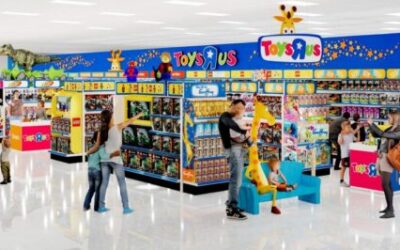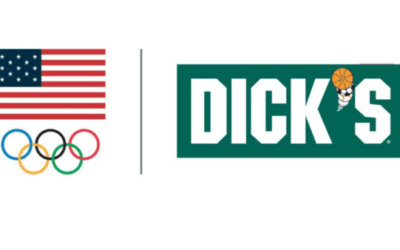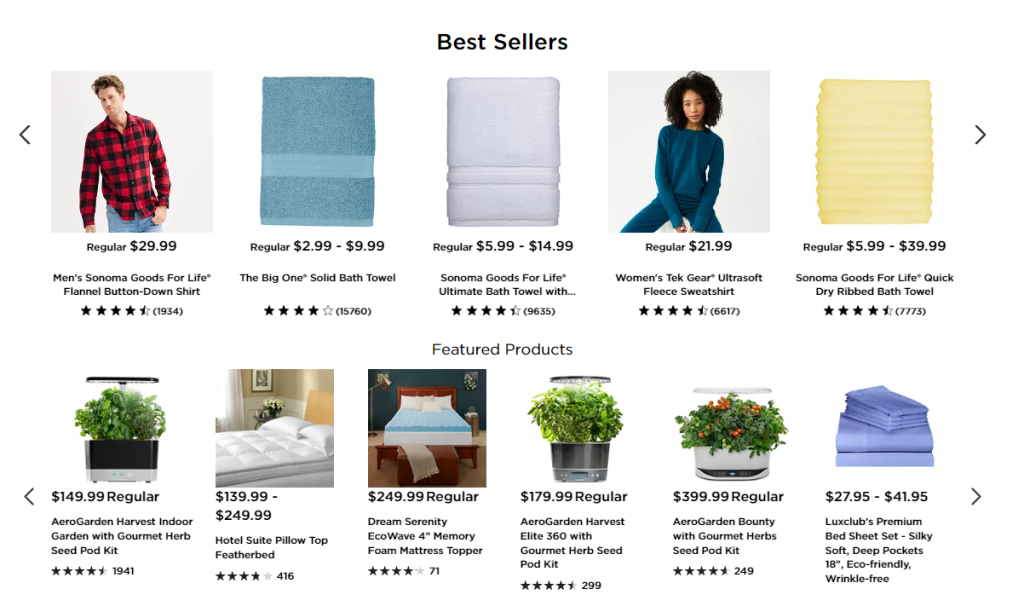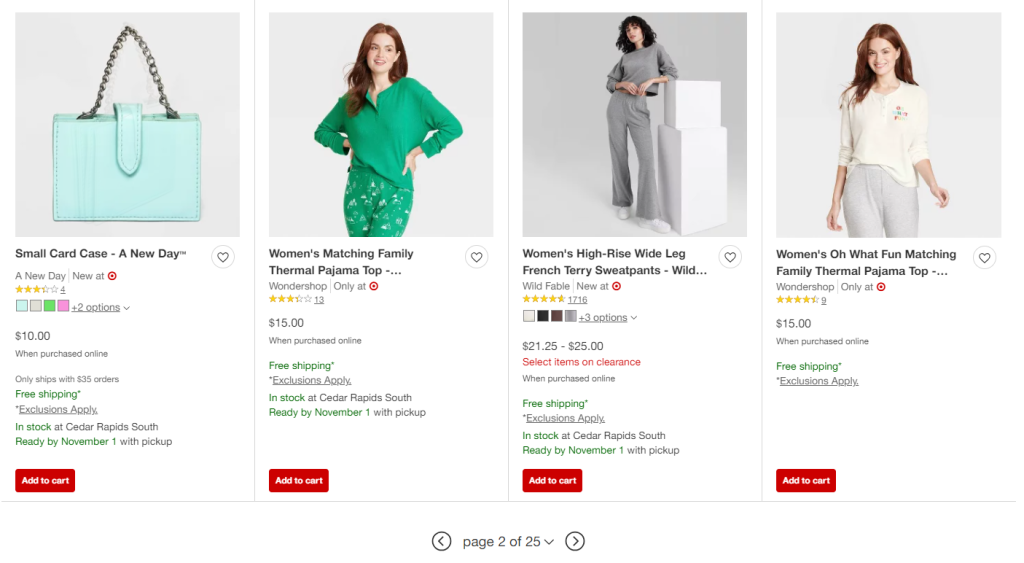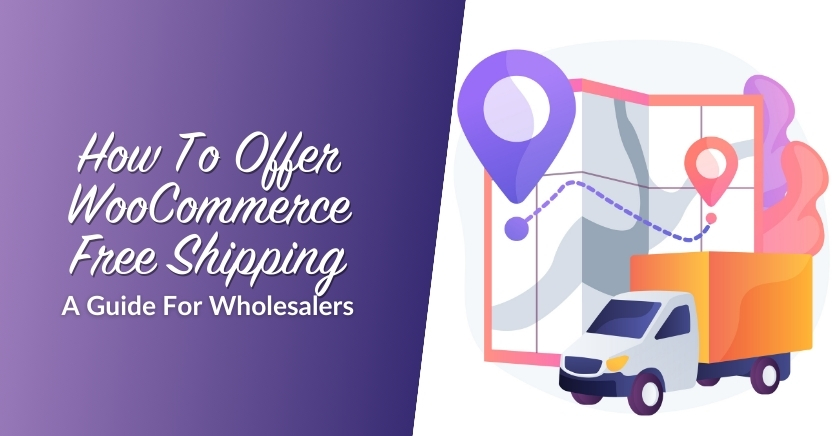Wholesale Product Catalog Management: 6 Proven Tips For Success
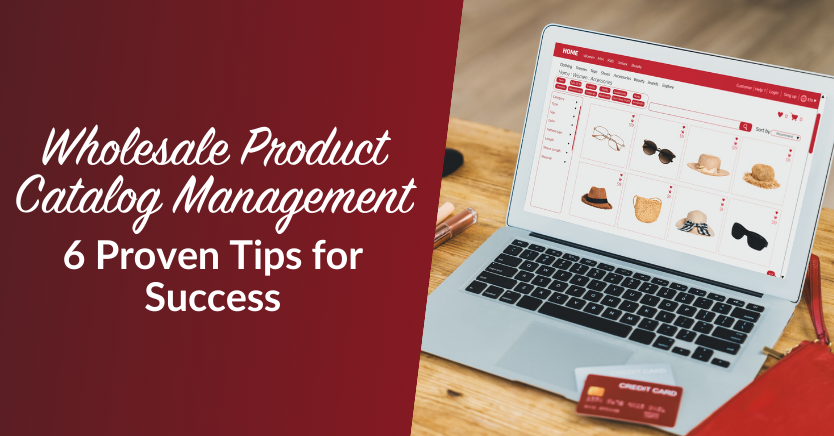

If you run a wholesale business, you likely have a wide array of products you offer to your valued B2B clients. Leveraging an intuitive, easy-to-navigate wholesale catalog is one of the best ways to maximize your sales and give your customers the best shopping experience. However, product catalog management can be a complex task, especially as your business grows and your product offerings expand.
No worries, we’re here to simplify things for you! In this guide, we’ll discuss six proven tips for effective catalog management. These strategies will help you improve the customer shopping experience and turn your wholesale product catalog into a powerful sales tool.
So, let’s get right into it!
6 Wholesale Product Catalog Management Tips
In this section, we’ll share six actionable tips for effective wholesale product catalog management. These practical tips will help you enhance your wholesale catalog and appeal to your B2B clients.
1. Create detailed product descriptions
Ensuring that your wholesale customers have access to detailed and accurate product information is a non-negotiable aspect of successful online B2B sales. According to industry research, 66% of B2B buyers consider product specifications as the top content they want to consume during their product research.
For effective product catalog management, consider the following strategies when creating your product descriptions:
- Provide detailed product specifications: Include all relevant information about the product, including materials, dimensions, technical details, and other key details to assist wholesale buyers in making informed decisions.
- Showcase bulk purchase benefits: You’ll also want to highlight any special wholesale pricing structures you offer, including quantity discounts and minimum order requirements. One easy way to do this is by clearly displaying the crossed-out list price alongside the discounted wholesale price.
- Communicate available customization options: B2B buyers often seek tailored solutions for their unique business needs. Therefore, make sure to mention any available customization options in your product descriptions.
- Maintain consistency: Using a consistent format can make it easier for your wholesale customers to understand your product catalog. Present your product descriptions with clear headings, bullet points, and paragraphs to make them easier to scan and understand.
2. Use high-quality product images
In wholesale e-commerce, the power of first impressions cannot be overstated. As wholesale customers browse through your online store, you’ll want to help them envision your offerings in detail.
Providing high-quality product photos is one of the easiest ways to do this. Moreover, it can help you improve your store’s credibility and maximize conversions. In fact, an industry case reveals that providing high-quality images can help increase conversion rates by up to 30%.
When it comes to effective product catalog management, consider the following tips:
- Invest in professional photos: The expertise of a skilled professional can make a huge difference in how your products will be presented to your valued customers. Invest in high-resolution images with clear visuals to give your customers the best preview of your offerings.
- Provide interactive features: You’ll also want to incorporate interactive features such as the ability to zoom and examine products up close. In turn, this can help enhance the confidence of your customers about your products.
- Optimize images for loading speed: The last thing you want is to frustrate your customers with slow-loading images. To prevent this, make sure to optimize file sizes on your product catalogs.
- Maintain a uniform presentation: As with product descriptions, you’ll also want to maintain a consistent presentation across your wholesale catalog. This may entail using the same lighting, backgrounds, or image dimensions. This simplifies product comparison and fosters professionalism.
3. Sort your products strategically
Effective sorting is another essential aspect of wholesale product catalog management. Wholesale customers navigating your website should encounter a well-structured catalog that facilitates easy product discovery.
There are several ways you can go about this, depending on the nature of your business and your current goals. For example, you opt to arrange products alphabetically, by SKU or product category. Powerful plugins like Wholesale Order Form allow you to provide customers with sorting and search options in your order forms to make the process seamless and convenient.
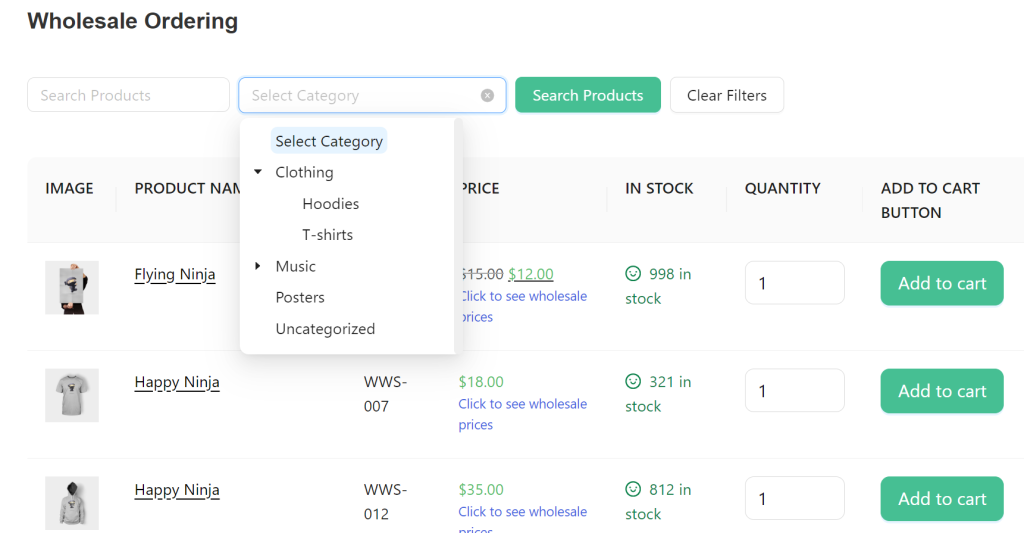
If your goal is to boost the visibility of specific products, consider featuring them prominently at the top of your catalog. You can also encourage customers to explore your best-selling items by strategically placing them at the top of the list.
4. Optimize the display method for your catalog size
The size and diversity of your product catalog can vary depending on the nature of your wholesale business. Consequently, your approach to product catalog management will also differ based on these variations. This entails choosing the right display method for your wholesale catalog.
Two of the most common display methods are Pagination and Lazy Loading. Let’s take a quick glimpse at each so you can figure out what suits your e-commerce store.
Pagination
Pagination features a classic approach to product display, where your catalog is divided into pages with a set number of products displayed on each page. Customers can navigate by clicking page numbers or using “Next” and “Previous” buttons.
This approach allows customers to jump between catalog pages easily and is particularly appealing if they prefer a more systematic approach to purchasing. Additionally, this can benefit users with slower internet speeds, as loading a limited number of products on each page can result in faster load times.
Lazy Loading
Lazy loading (also called on-demand loading) offers a more fluid browsing experience, where new products load automatically as customers scroll down the page. As such, your customers have the freedom to explore your entire catalog without clicking through different pages.
As users can scroll through the catalog without interruptions, this choice may provide a more seamless and immersive shopping experience. This convenience can also encourage spontaneous exploration of your product offerings and reduce friction in the shopping journey.
So, which one is right for your business?
Both approaches are great options, but your choice will largely depend on the experience you want to provide your B2B buyers and the size of your product catalog. For instance, smaller catalogs may find pagination more effective, as it offers clear structure and customer control.
Conversely, larger product catalogs can benefit from the uninterrupted browsing experience provided by Lazy Loading. You can try and test out which method will work best for your business. Tools like Wholesale Order Form allow you to create multiple product catalogs and modify your display method to cater to your catalog size and customer preferences.
5. Offer quick ordering options
Now that you’ve crafted the best product descriptions, uploaded high-quality images, and made sure your catalog is easy to navigate, the next important step is to simplify the process of adding products to the cart! Much like optimizing your display, you can also choose from several options for implementing an easy-to-use Add to Cart Functionality.
For example, Wholesale Order Form allows you to seamlessly integrate an “Add to Cart” button alongside your product listings. This familiar button allows customers to add products to their cart with a single click.
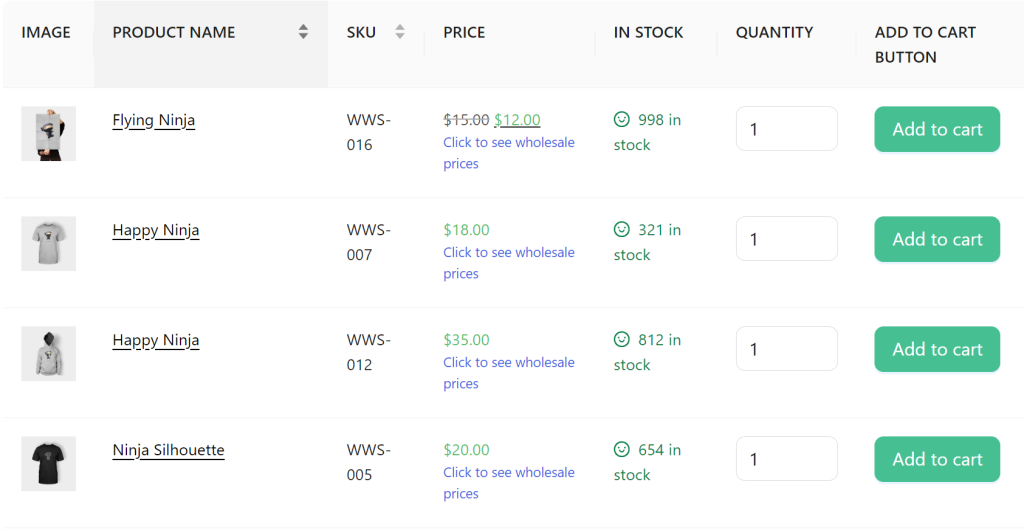
Alternatively, you can opt for a checkbox-based selection method. With this approach, customers can select multiple products by checking the boxes next to each item and easily add all chosen items to their cart in one click.
Consider the following factors in your product catalog management to give your customers the best experience:
- Customer preferences: Understand your customers’ preferences and ordering habits to choose the most suitable “Add to Cart” method. One of the best ways to do this is by gathering feedback about their shopping experience.
- Ordering frequency: Likewise, you can tailor the ordering options to match the typical ordering patterns of your customers, whether they order consistent sets of items or frequently vary their selections.
- Mobile accessibility: Lastly, ensure that the chosen method is mobile-friendly, accommodating customers who may place orders using mobile devices.
6. Regularly update your catalog
Product catalog management is not a one-time thing– it’s an ongoing process, ensuring you provide your valued B2B clients access to your latest offerings. Keeping your catalog current demonstrates your commitment to providing them with the best products.
Below, we’ve compiled key considerations to keep in mind as you update your product catalog:
- Add new products: Promptly add new products to your catalog to give your B2B customer access to your latest offerings.
- Remove discontinued items: Conversely, you should review your catalog periodically and remove discontinued or unavailable items. Your B2B clients will appreciate an order catalog that reflects real-time product availability.
- Update Product Information: Changes in product specifications, pricing, or availability should also be updated in real time.
- Reflect Seasonal Trends: Adjust your catalog to reflect seasonal trends and customer preferences. For example, you can highlight products that are particularly relevant during specific seasons.
To make this process more manageable, it’s best to create a regular schedule for catalog updates. Depending on the nature of your industry and unique offerings, this schedule can be monthly, quarterly, or as needed.
Lastly, don’t forget to notify your customers about catalog updates. Email is a powerful way to do this. Keeping your customers informed about the latest additions and changes to your catalog ensures they stay engaged and informed, allowing you to stay top of mind.
Conclusion
Effective product catalog management is a powerful way to maximize sales and provide a seamless shopping experience to your B2B customers. In this guide, we revealed six actionable tips for successful product catalog management designed to help your business thrive in the e-commerce landscape.
To summarize, let’s review them below:
- Create detailed product descriptions
- Use high-quality product images
- Sort your products strategically
- Optimize the display method for your catalog size
- Offer quick ordering options
- Regularly update your catalog
Wholesale Order Form makes it simple for wholesale businesses to create a tailored and intuitive wholesale product catalog. With this powerful plugin, you can create easy-to-navigate order forms and improve the buying experience of your B2B clients.
Do you have any questions about wholesale product catalog management? Which of the strategies did you find most helpful? Let us know in the comments section below!
The post Wholesale Product Catalog Management: 6 Proven Tips For Success appeared first on Wholesale Suite.


